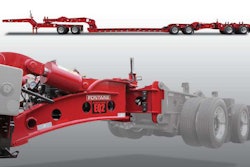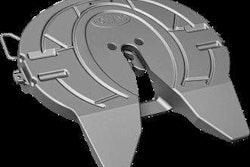Bendix Spicer Foundation Brake LLC (BSFB) has released an update of its white paper titled “The Federal Reduced Stopping Distance Mandate: Impact and Solutions.”
The paper, which initially published in July of last year, examines the mandate’s impact on the trucking industry and approaches to meet it.
Phase one of the Reduced Stopping Distance (RSD) mandate took effect in August 2011 for new three-axle tractors with Gross Vehicle Weight Ratings (GVWRs) up to 59,600 lbs. Phase two of the mandate, aimed at tractors with two axles, as well as severe service tractors with GVWRs above 59,600 lbs., took effect Aug. 1, 2013.
BSFB says the paper examines the evolution of the mandate, while outlining how the ruling fits within the broader context of industry braking trends. It also notes solutions that meet the requirements and explores the mandate’s impact on the trucking industry, including the aftermarket.
Among the changes in the updated paper are a discussion on solutions for phase two of the final rule, as well as a new section examining why replacing high performance friction with like friction is essential to maintaining performance of RSD brakes, compliance with both phases of the RSD mandate, and safety.
Gary Ganaway, Bendix Spicer Foundation Brake director of marketing and global customer solutions, and Aaron Schwass, BSFB vice president and general manager, researched and co-authored the study. Bendix Spicer Foundation Brake is a joint venture between Bendix Commercial Vehicle Systems LLC and Dana Commercial Vehicle Products, LLC.
In its December 2005 Notice of Proposed Rulemaking, the National Highway Traffic Safety Administration (NHTSA) called for a 20 to 30 percent reduction in the required stopping distance for large trucks. Designed to be implemented in two phases, the rule affects nearly all of the roughly 300,000 tractors manufactured annually.
The white paper describes the wide variety of configurations available to meet the mandate. Options include all drum brakes, all disc brakes, or a combination of both.
BSFB’s study also includes an analysis of the mandate’s impact across the industry, from OEMs to fleets, owner-operators, and the aftermarket, as well as an examination of the value proposition of higher performing brakes.
A new section in the updated paper looks at the importance of choosing OEM replacement parts, with the choice of proper replacement brake linings for high performance brakes being especially critical.













